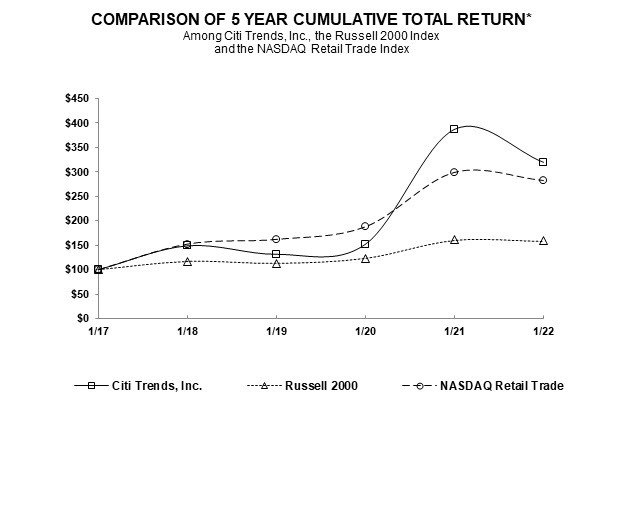and retain employees, which could have an adverse impact on our business, financial condition and results of operations.
In addition, we rely heavily on the experience and expertise of our senior management team and other key management associates, and accordingly, the loss of their services could have a material adverse effect on our business strategy and results of operations.
Risks Related to General Economic and Market Conditions
Our sales could decline and our store operations could be disrupted as a result of general economic and other factors outside of our control, such as changes in consumer spending patterns and declines in employment levels.
Downturns, or the expectation of a downturn, in general economic conditions, including the effects of unemployment levels, salaries and wage rates, inflation in energy, food and other consumer good prices, interest rates, higher insurance costs, levels of consumer debt, taxation (including delays in the distribution of tax refunds), government stimulus, consumer confidence, increased fuel costs or fuel shortages, increased shipping, transportation and distribution costs and other macroeconomic factors, could adversely affect consumer spending patterns, our sales and our results of operations. Consumer confidence may also be affected by domestic and international political or social unrest (including related protests or disturbances), acts of war or terrorism, natural disasters, public health emergencies like the COVID-19 pandemic, or other significant events outside of our control. These and other social, political and economic factors that contribute to consumer unease or damage to our stores, may lead to a decrease in spending by consumers or disrupt our store operations, which may negatively impact our business, financial condition and results of operations. Also, because apparel generally is a discretionary purchase, declines in consumer spending patterns may have a more negative effect on apparel retailers than some other retailers. In addition, since many of our stores are located in the southeastern United States, our operations are more susceptible to regional factors than the operations of our more geographically diversified competitors. Therefore, any adverse economic conditions that have a disproportionate effect on the southeastern United States could have a greater negative effect on our sales and results of operations than on retailers with a more geographically diversified store base.
A significant disruption to our distribution process or southeastern retail locations could have an adverse effect on our business, financial condition and results of operations.
Our ability to distribute our merchandise to our store locations in a timely manner is essential to the efficient and profitable operation of our business. We have distribution centers located in Darlington, South Carolina and Roland, Oklahoma. The efficient flow of our merchandise requires that our distribution facilities be operated effectively and have adequate capacity to support our current level of operations and any anticipated increased levels that may follow from the growth of our business. Any natural disaster or other disruption to the operation of either of these facilities or our drop shipping capabilities due to fire, accidents, public health emergency such as the current COVID-19 pandemic, weather conditions, including natural disasters, or any other cause could damage a significant portion of our inventory, impair our ability to stock our stores adequately and may result in increased supply chain costs or lost sales. For example, we typically generate higher revenues and gross margins during our fourth fiscal quarter, which includes the year-end holiday season. Therefore, if weather conditions are not favorable during these periods, our operating results and cash flow from operations could be adversely affected.
In addition, the southeastern United States, where the Darlington distribution center and many of our stores are located, is vulnerable to significant damage or destruction from hurricanes and tropical storms. Such weather events may become increasingly frequent or severe as a result of climate change. Although we maintain insurance on our stores and other facilities, the economic effects of a natural disaster that affects our distribution centers and/or a significant number of our stores could have an adverse effect on our business, financial condition and results of operations.
We currently rely upon third-party transportation providers for all of our merchandise shipments to our distribution centers and our retail stores. Accordingly, we are subject to the risks, including labor disputes or strikes, union organizing activity, inclement weather, public health emergencies, supply chain interruptions, port delays, increased freight, distribution and transportation costs, associated with such providers’ ability to provide delivery services to meet outbound shipping needs. In addition, if the cost of fuel rises, the cost to deliver merchandise to our distribution centers and our retail stores may rise and such costs could have an adverse impact on our profitability. If we change the transportation providers we use, we could face logistical difficulties that could adversely affect deliveries, and we would incur costs and expend resources in connection with such change. Moreover, we may not be able to obtain terms as favorable as those received from our current independent third-party transportation providers which, in turn, would increase our costs. Failure to deliver merchandise to our distribution centers and our retail stores in a timely, effective and economically viable manner could adversely affect our business, financial condition and results of operations.
We do not own or operate any manufacturing or production facilities and therefore depend upon third parties for the manufacture of all of our merchandise. The inability of a manufacturer to ship goods on time and to our specifications, or to operate in compliance with our guidelines or any other applicable laws, could negatively impact our business.
We do not own or operate any manufacturing or production facilities. As a result, we are dependent upon our timely receipt of quality merchandise from third-party manufacturers. If our manufacturers do not ship orders to us in a timely manner or meet our quality
